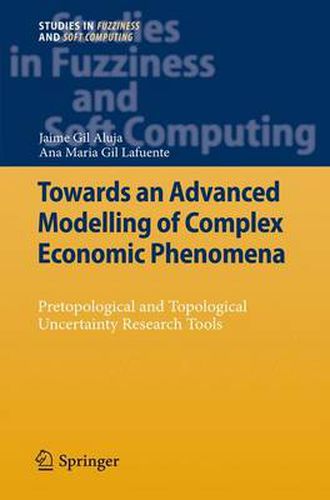Readings Newsletter
Become a Readings Member to make your shopping experience even easier.
Sign in or sign up for free!
You’re not far away from qualifying for FREE standard shipping within Australia
You’ve qualified for FREE standard shipping within Australia
The cart is loading…






This title is printed to order. This book may have been self-published. If so, we cannot guarantee the quality of the content. In the main most books will have gone through the editing process however some may not. We therefore suggest that you be aware of this before ordering this book. If in doubt check either the author or publisher’s details as we are unable to accept any returns unless they are faulty. Please contact us if you have any questions.
Little by little we are being provided with an arsenal of operative instruments of a non-numerical nature, in the shape of models and algorithms, capable of providing answers to the aggressions which our economics and management systems must withstand, coming from an environment full of turmoil.
In the work which we are presenting, we dare to propose a set of elements from which we hope arise focuses capable of renewing those structures of economic thought which are upheld by the geometrical idea.
The concepts of pretopology and topology, habitually marginalized in economics and management studies, have centred our interest in recent times. We consider that it is not possible to conceive formal structures capable of representing the Darwinism concept of economic behaviour today without recurring to this fundamental generalisation of metric spaces.
In our attempts to find a solid base to the structures proposed for the treatment of economic phenomena, we have frequently resorted to the theory of clans and the theory of affinities with results which we believe to be satisfactory. We would like to go further, establishing, if possible, the connection between their axiomatics at the same time as developing some uncertain pretopologies and topologies capable of linking previously unconnected theories, at the same time easing the creation of other new theories.
$9.00 standard shipping within Australia
FREE standard shipping within Australia for orders over $100.00
Express & International shipping calculated at checkout
This title is printed to order. This book may have been self-published. If so, we cannot guarantee the quality of the content. In the main most books will have gone through the editing process however some may not. We therefore suggest that you be aware of this before ordering this book. If in doubt check either the author or publisher’s details as we are unable to accept any returns unless they are faulty. Please contact us if you have any questions.
Little by little we are being provided with an arsenal of operative instruments of a non-numerical nature, in the shape of models and algorithms, capable of providing answers to the aggressions which our economics and management systems must withstand, coming from an environment full of turmoil.
In the work which we are presenting, we dare to propose a set of elements from which we hope arise focuses capable of renewing those structures of economic thought which are upheld by the geometrical idea.
The concepts of pretopology and topology, habitually marginalized in economics and management studies, have centred our interest in recent times. We consider that it is not possible to conceive formal structures capable of representing the Darwinism concept of economic behaviour today without recurring to this fundamental generalisation of metric spaces.
In our attempts to find a solid base to the structures proposed for the treatment of economic phenomena, we have frequently resorted to the theory of clans and the theory of affinities with results which we believe to be satisfactory. We would like to go further, establishing, if possible, the connection between their axiomatics at the same time as developing some uncertain pretopologies and topologies capable of linking previously unconnected theories, at the same time easing the creation of other new theories.